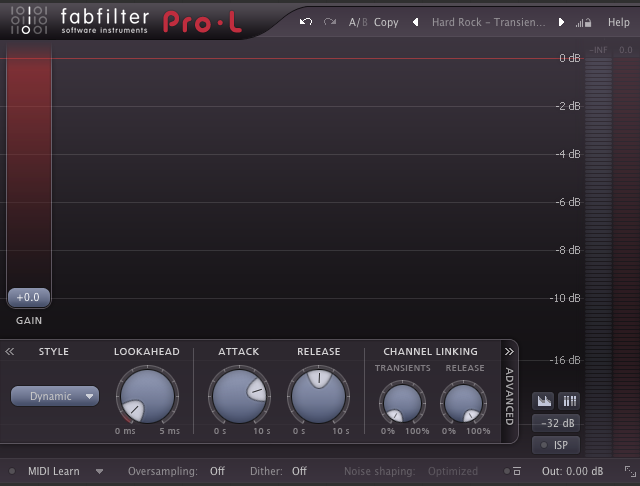If there are any rules in mixing, one that is certainly worth going by is to not use a limiter on your mix buss.
I have used a limiter on my mix buss before and I'm going to explain why I don't do it anymore and how things got much easier once I stopped fighting it.
A limiter is simply a compressor with a very high or infinite ratio and is built to prevent peaks in an audio signal as well as limiting the dynamic range, allowing you to increase the overall dB level of the mix.
Because a limiter can shape the dynamics in a mix so much, this can cause problems if you are still in the mixing process and trying to make accurate decisions, especially with individual instrument compression. The main problem with trying to mix with a limiter on your buss is that it will warp your perception of the dynamics and characteristics.
Depending on the kind of audio material you are working with, your goal is likely to be to achieve a punchy mix and this is where your reliance on compression should be. Keep the limiter off your mix buss and no it won't be loud whilst you are working, but you can always turn up your studio monitors to compensate for this.
In the past i used a limiter on my mix buss, but i found i wasn't able to use compression properly and my judgement of transients wasn't entirely accurate because in some cases, they were already been reduced by the limiter and this seriously affected the way i compressed certain instruments. Since then, I have never used a limiter on my mix buss whilst mixing and my application of compression is the best it has ever been.
 I only apply a limiter to a mix when I am sending a draft to a client, just so they are able to listen at a more standard volume level. When preparing audio to be sent to a mastering engineer, I always remove the limiter. This is an industry standard for shipping audio material to a mastering engineer as they expect to receive files with a good amount of headroom to work with. It is part of the role of a mastering engineer to apply limiting to a mix and this is where the 'loudness' of a commercial release is achieved.
I only apply a limiter to a mix when I am sending a draft to a client, just so they are able to listen at a more standard volume level. When preparing audio to be sent to a mastering engineer, I always remove the limiter. This is an industry standard for shipping audio material to a mastering engineer as they expect to receive files with a good amount of headroom to work with. It is part of the role of a mastering engineer to apply limiting to a mix and this is where the 'loudness' of a commercial release is achieved.
For the many occasions where I am mastering my own mixes, as many home studio owners also do, I bounce out my entire mix without a limiter. I then master the track in a separate session, allowing me to focus entirely on the stereo audio file with no option to tweak with individual aspects of the mix. I like to think of this as printing or committing to a mix and the only thing I have left to do is add the final polish and make it a cohesive product.
Try mixing without a limiter on your mix buss and focus on achieving a great mix using your two most powerful tools, EQ and compression. Leave the limiting to a separate mastering session or for shipping our to a mastering engineer.
I offer online editing, mixing and mastering services, check out www.jwaudioproductions.co.uk and get in touch via the contact page about your project.















